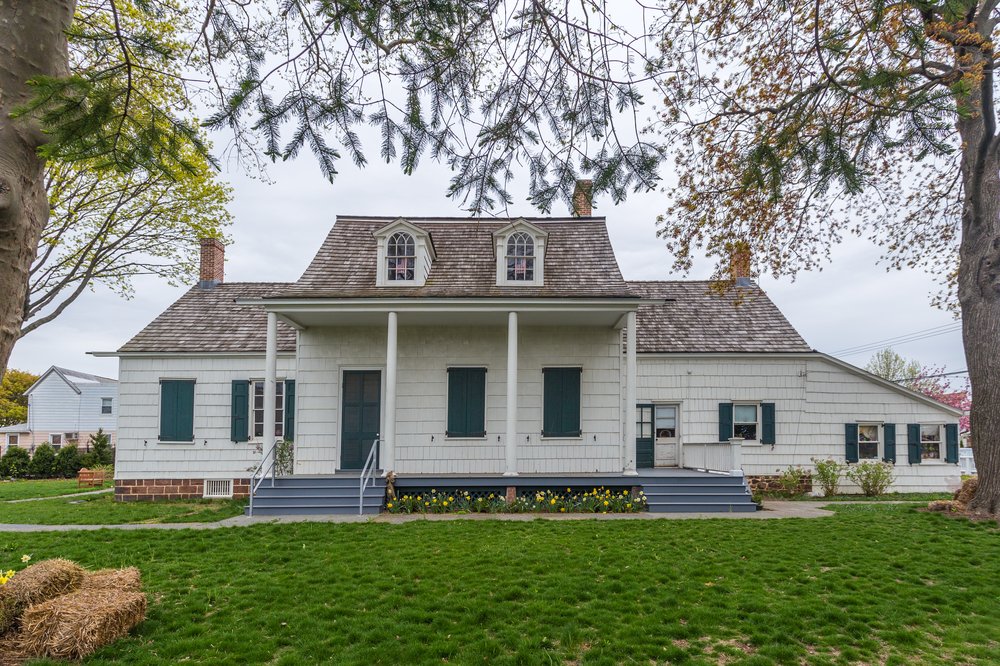A farmhouse older than the U.S. to become a 'living museum' in Brooklyn's Marine Park
Feb. 22, 2025, 7:01 a.m.
Portions of the Lott House were first constructed around 1720 by a family that once owned much of the Brooklyn neighborhood.

One of Brooklyn's oldest homes is set to get a long-needed renovation and emerge from it as a museum.
Marine Park’s Hendrick I. Lott House serves as a rare, still-standing relic of the borough’s 18th century history and Dutch Colonial-style housing — portions of it are older than the United States. It was built by a member of a family that first immigrated to the land then known as New Amsterdam in the 1650s, and that once owned most of what would become Marine Park, according to the nonprofit Friends of the Lott House.
The home — which is listed as a city landmark and is also on the National Register of Historic Places — was built in 1800 by Hendrick I. Lott and incorporates part of the homestead that his grandfather Johannes Lott first constructed around 1720, according to the parks department. It was occupied by a member of the family until Ella Suydam, a great-great-great-great-granddaughter of Johannes Lott, died in 1989, according to the parks department.
The Lott House is one of just 14 remaining Dutch Colonial farmhouses in Brooklyn, according to the department.
In the early 1990s, local architects and preservation-minded individuals formed the group Friends of the Lott House, and set out to help revitalize the building, which had fallen into disrepair.
New York City purchased the property in 2002, and commenced exterior and landscape renovations that were eventually completed in 2013.
In the subsequent years, the grounds have hosted numerous community events.
Now, it’s time for the badly deteriorated interior to be restored, according to the Friends group. Once finished, the “time capsule of Gotham history” will open to the public as a fully operational “living neighborhood museum,” according to an announcement from the group, which is working with NYC Parks and Historic House Trust on the renovation. The age of the building — which is currently closed to the public — makes it a “living” relic of a bygone era, and soon it will host “an inaugural program calendar of interpretive programs and exhibitions,” the group said.

Alyssa Loorya, president of the Friends group and principal of Chrysalis Archeology, said the organization is eager to do more to share the history of the Lott Family and south Brooklyn. “It’s a New York City Story,” she said in an announcement of the upcoming work.
“It's exciting not only because the local neighborhood truly cares about the house, but we don't necessarily have this type of resource in deep south Brooklyn,” Loorya told Gothamist. “We don't have a museum.”
The planned renovations include the modernization of the home’s electricity (which hasn’t been updated since 1910), plumbing, air conditioning and accessibility, as well as infrastructural improvements, which will all be done while maintaining the residence’s historic details.
Work is set to begin early next year.
The museum, which the release notes will be “the first public museum in Brooklyn’s serene marshland,” will explore the history of the area, those who worked there, and the Lott family— bringing a cultural attraction to a quiet, residential corner of Brooklyn that is best known for its nature.
The Lott House’s history starts in the late 1710s, when one Col. Johannes H. Lott bought a 220-acre farm in what was then the Town of Flatlands and constructed a small farmhouse, according to the Friends group. His grandson Hendrick I. Lott moved to the homestead from Manhattan in 1800 and built a high-ceilinged expansion with grand interior details including decorative fireplace mantles and moldings. (The original portion is today the home’s eastern wing.)
What began as a vegetable farm came to include some dairy production and, eventually oysters, before shrinking to 30 acres at the beginning of the 20th century. Its final harvest was in 1925, and shortly after the city laid water lines through the former farm fields as a wave of residential development took hold, according to the group.
But instead of moving, the group said, members of the family kept the home and the surrounding property, which had shrunk to just three-quarters of an acre.
I’m still visiting every museum in NYC. Here are 9 of my favorites from 2024.